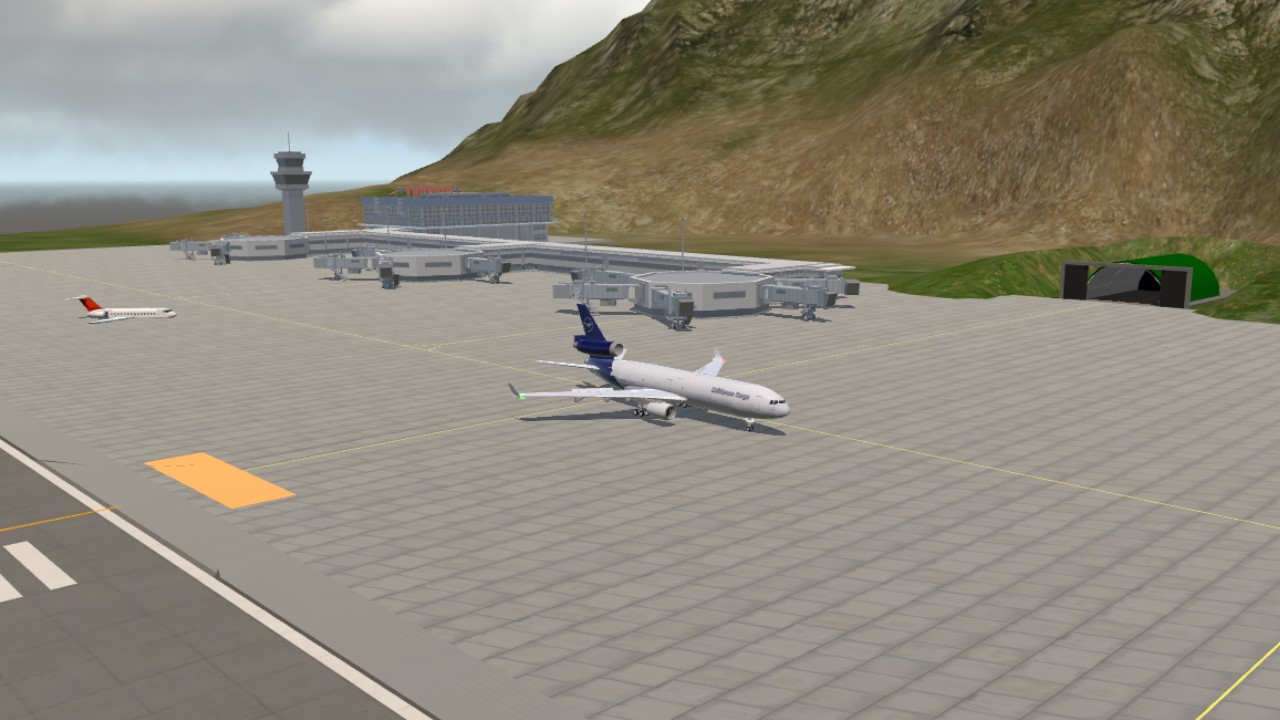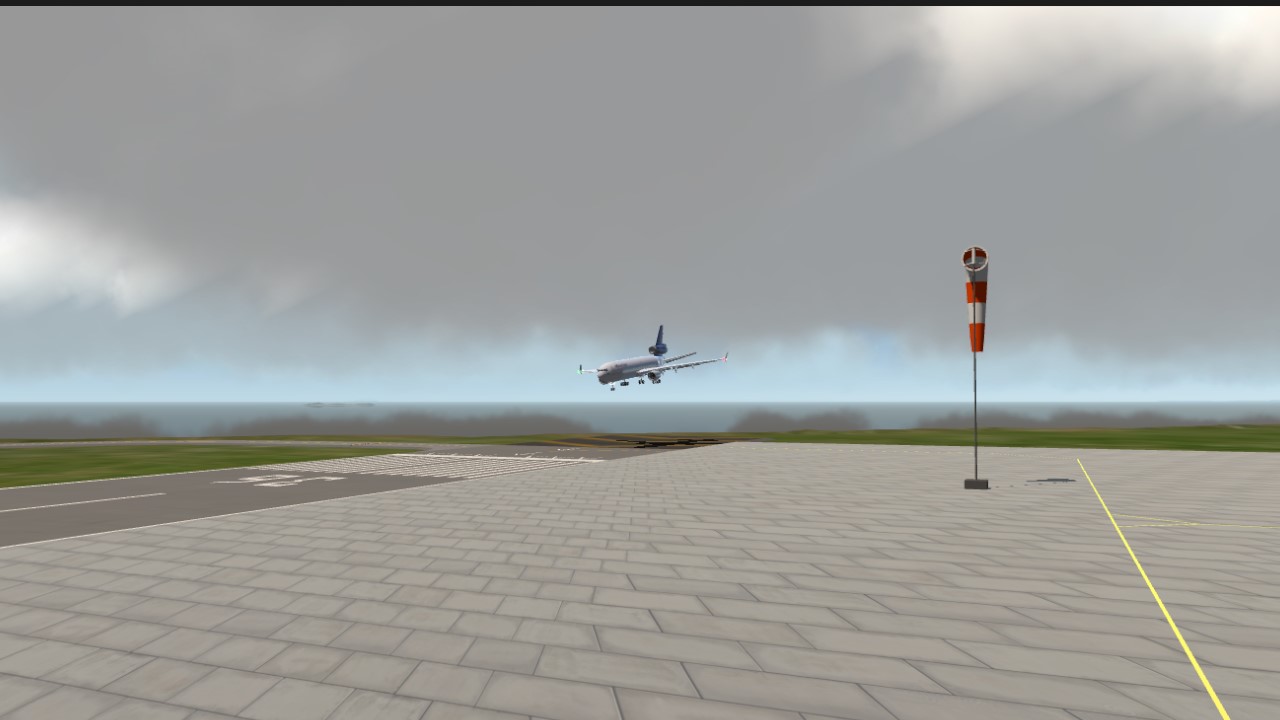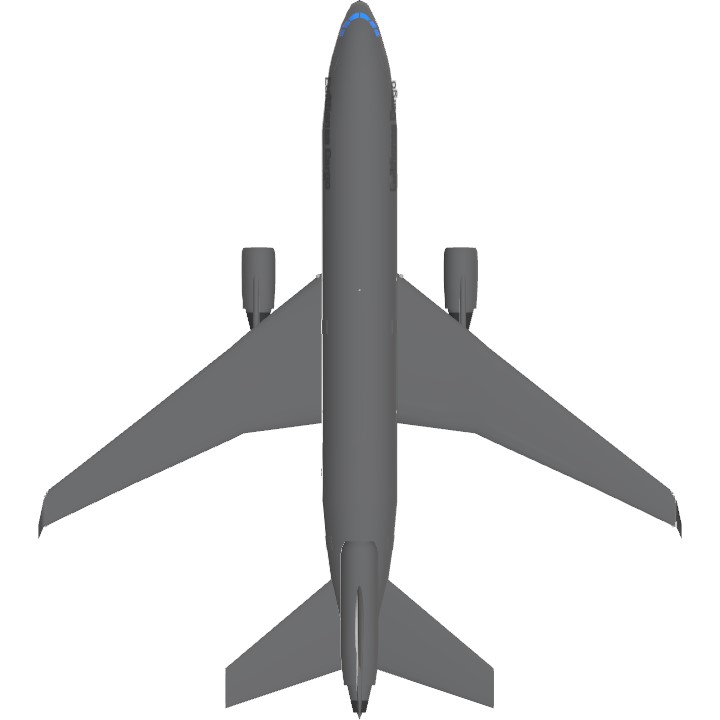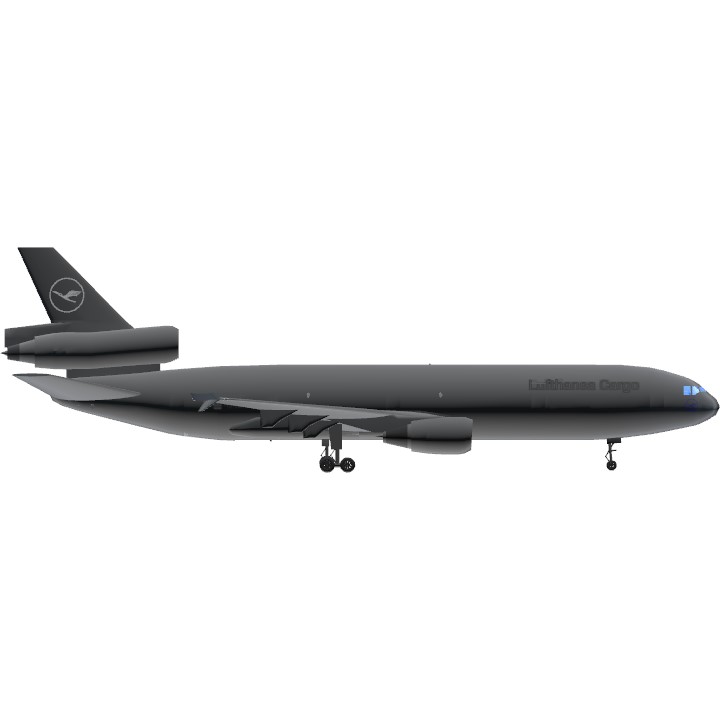AboutMD-11:
The McDonnell Douglas MD-11 is an American trijet wide-body airliner manufactured by American manufacturer McDonnell Douglas (MDC) and later by Boeing. Following DC-10 development studies, the MD-11 program was launched on December 30, 1986. Assembly of the first prototype began on March 9, 1988. Its maiden flight occurred on January 10, 1990, and it achieved Federal Aviation Administration (FAA) certification on November 8. The first delivery was to Finnair on December 7 and it entered service on December 20, 1990.
It retains the basic trijet configuration of the DC-10 with updated GE CF6-80C2 or PW4000 turbofan engines. Its wingspan is slightly larger than the DC-10 and it has winglets. Its maximum takeoff weight (MTOW) is increased by 14% to 630,500 lb (286 t). Its fuselage is stretched by 11% to 202 ft (61.6 m) to accommodate 298 passengers in three classes over a range of up to 7,130 nautical miles [nmi] (13,200 km; 8,210 mi). It features a glass cockpit that eliminates the need for a flight engineer.
Originally positioned as a longer-range alternative to rival twinjets, the existing Boeing 767 and the upcoming Boeing 777 and Airbus A330, the MD-11 initially failed to meet its range and fuel burn targets, which impacted its sales despite a performance improvement program. McDonnell Douglas's finance struggles prevented further development of the MD-11 before it was acquired by Boeing in 1997; the unified company decided to terminate the MD-11 program after filling outstanding orders due to internal competition from Boeing's own 767 and 777. Only 200 examples were built, of which roughly a quarter were freight aircraft, and production concluded in October 2000. In November 2014, it was officially retired from passenger service, last flown by KLM. Many of the MD-11 passenger fleet were converted to freighter specification, with many remaining in service as of 2025.
About MD-11F:
MD-11F (53 built): The freight transport aircraft was the second variant on offer at launch in 1986 and was the last and longest (1988–2000) manufactured version. The all-cargo aircraft features the same forward port-side cargo door (140 by 102 inches (3.6 m × 2.6 m)) as the MD-11CF, a main-deck volume of 15,530 cubic feet (440 m3), a maximum payload of 200,151 pounds (90,787 kg) and can transport 26 pallets of the same dimensions (88 by 125 inches (2.2 m × 3.2 m) or 96 by 125 inches (2.4 m × 3.2 m)) as for the MD-11C and MD-11CF. The MD-11F was delivered between 1991 and 2001 to FedEx Express (22), Lufthansa Cargo (14), and other airlines with fewer aircraft.
About Lufthansa:
Deutsche Lufthansa AG (German pronunciation: [?d??t?? 'l?fthanza? ?a?'ge?] ?), trading as the Lufthansa Group, is a German aviation group. Its major and founding subsidiary airline Lufthansa German Airlines, branded as Lufthansa, is the flag carrier of Germany.[9] It ranks second in Europe by passengers carried, as well as largest in Europe and fourth largest in the world by revenue.[10][11] Lufthansa Airlines is also one of the five founding members of Star Alliance, which is the world's largest airline alliance, formed in 1997.[12][13] Lufthansa was founded in 1953 and commenced operations in April 1955.
Besides operating flights under its own brand Lufthansa Airlines, the Lufthansa Group also owns several other airlines, including Austrian Airlines, Brussels Airlines, Discover Airlines, Eurowings, ITA Airways and Swiss International Air Lines. The group also owns several aviation-related companies, including Global Load Control, Lufthansa Consulting, Lufthansa Flight Training, Lufthansa Systems and Lufthansa Technik.
The company was founded as Aktiengesellschaft für Luftverkehrsbedarf (often shortened to Luftag) on 6 January 1953 by staff of the former Deutsche Luft Hansa, Germany's national airline founded in 1926. While Deutsche Luft Hansa played a significant role in the development of commercial aviation in Germany, it was liquidated in 1951 due to its association with the Nazi regime during World War II. Luftag adopted the branding of the former flag carrier by acquiring the Luft Hansa name and logo in 1954.
Lufthansa's corporate headquarters are in Cologne. The main operations base, called Lufthansa Aviation Center, is located at Frankfurt Airport, the airline's primary hub. It also maintains a secondary hub at Munich Airport, along with its Flight Operations Centre.
Credit:
MD-11F By:
Aviationguy24
Livery By :
Me
Specifications
Spotlights
- Cellado 3 months ago
General Characteristics
- Created On Windows
- Wingspan 168.4ft (51.3m)
- Length 188.4ft (57.4m)
- Height 59.0ft (18.0m)
- Empty Weight N/A
- Loaded Weight 132,558lbs (60,127kg)
Performance
- Power/Weight Ratio 1.148
- Horse Power/Weight Ratio 0.033
- Wing Loading 28.2lbs/ft2 (137.7kg/m2)
- Wing Area 4,700.5ft2 (436.7m2)
- Drag Points 8841
Parts
- Number of Parts 425
- Control Surfaces 9
- Performance Cost 3,044







@Aviationguy24 The Items
What is the mod seen in the second photo?
@Petropavlovsk101 i khow this but dont talk this to other players
I KNOW what will happen in 3rd picture